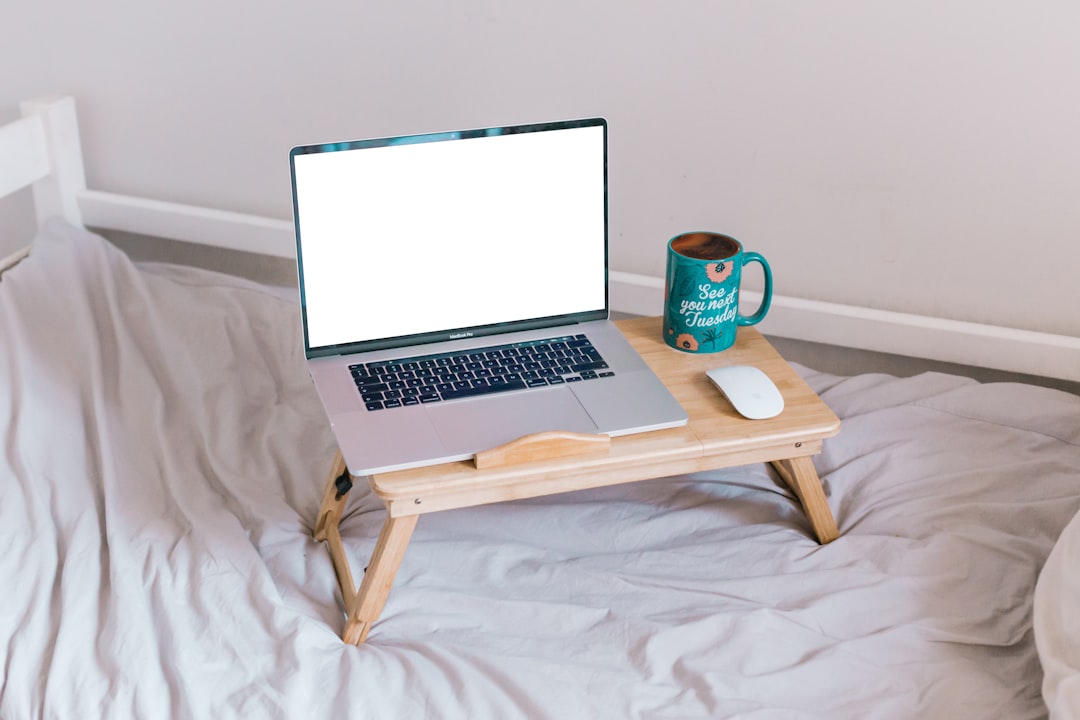Road Ready Wellness Habits for Remote Workers

Introduction
Remote work has turned the world into a sprawling office without walls. For many digital nomads the daily commute is a plane ticket, a train ride, or a bike path that stretches through a new city each week. The freedom to set up a laptop on a beach, a mountain chalet, or a bustling café is exhilarating, but it also removes the familiar structures that keep our bodies and minds in balance. Without intentional habits, the allure of new sights, irregular schedules, and the temptation to work around the clock can quickly erode health, productivity, and happiness.
This guide offers a comprehensive set of wellness habits that are specifically designed for life on the road. The focus is on practical, low‑maintenance routines that fit into the fluid lifestyle of remote workers, while also addressing the unique nutritional challenges of eating abroad. By weaving together movement, nutrition, sleep, mental health, and community, you can create a resilient foundation that supports both your career and your wellbeing wherever you set up shop.
The Four Pillars of Road Ready Wellness
- Movement – Keeping the body active despite changing environments.
- Nutrition – Choosing food that fuels performance and adapts to local cuisines.
- Rest – Prioritising quality sleep and recovery in varied time zones.
- Mindset – Maintaining mental clarity, emotional balance, and social connection.
Each pillar is interdependent; neglecting one makes the others harder to sustain. The habits below are built to reinforce the whole system, allowing you to stay healthy without sacrificing the spontaneity that makes remote work rewarding.
Movement on the Move
Why Movement Matters
Sitting for long periods harms cardiovascular health, posture, and mental focus. For remote workers who spend most of the day in front of a screen, intentional movement is the antidote. Regular activity also combats jet lag, reduces stress hormones, and improves digestion – all crucial when you’re constantly adjusting to new climates and cuisines.
Simple Strategies for Any Location
- Micro‑breaks every hour – Set a timer to stand, stretch, or walk for 2‑3 minutes. Even a brief walk around a co‑working space can reset circulation.
- Bodyweight circuits – Push‑ups, squats, lunges, and planks require no equipment and can be done in a hotel room, park, or balcony. Aim for three rounds of 10‑15 reps each.
- Walking or biking to work – Choose a café or co‑working hub within a 10‑15 minute walk or bike ride. The commute doubles as warm‑up and helps you explore the neighborhood.
- Local fitness classes – Many cities offer free or low‑cost yoga, Pilates, or HIIT sessions in community centers or parks. Joining a class also adds a social element.
- Active sightseeing – Replace a traditional museum visit with a guided walking tour or a hike. The extra steps contribute to daily activity goals without feeling like exercise.
Building a Flexible Routine
Because itineraries shift, a rigid schedule can cause stress. Instead, adopt a “movement window” approach:
- Morning window (15‑30 minutes) – Stretch, do a short bodyweight circuit, or go for a brisk walk before the workday starts.
- Mid‑day window (5‑10 minutes) – Use lunch breaks for a quick stroll or a set of mobility drills.
- Evening window (20‑40 minutes) – End the day with a longer activity such as a bike ride, swim, or a yoga flow.
If a day’s travel plans don’t allow for a specific window, simply move the activity to another part of the day. The goal is to accumulate at least 30‑45 minutes of moderate activity daily, with occasional higher‑intensity sessions when time permits.
Nutrition Strategies Across Borders
The Challenge of Eating Abroad
When you’re constantly on the move, grocery shopping, cooking, and meal planning become more complex. Language barriers, unfamiliar ingredients, and varying food safety standards can make it difficult to maintain a balanced diet. Yet nutrition is the cornerstone of energy, focus, and immune health.
Core Principles for a Road Ready Diet
- Prioritise whole foods – Fresh fruits, vegetables, legumes, nuts, and lean proteins provide the nutrients needed for sustained mental performance.
- Embrace local staples – Each region offers nutrient‑dense foods that are affordable and culturally relevant. Learning to incorporate them into meals expands variety and reduces reliance on imported processed items.
- Balance macronutrients – Aim for a mix of complex carbohydrates, high‑quality protein, and healthy fats at each meal to stabilise blood sugar and avoid energy crashes.
- Stay mindful of portion sizes – Restaurant portions can be larger than needed. Use half‑plate method: fill half the plate with vegetables, a quarter with protein, and a quarter with carbs.
- Limit processed snacks and sugary drinks – They provide quick energy but lead to crashes and inflammation. Opt for nuts, seeds, fresh fruit, or yogurt when cravings hit.
Practical Food‑Finding Tips
- Visit local markets – Markets are the best places to find fresh produce, seasonal fruits, and affordable proteins like beans, eggs, or fish. Arriving early often yields the freshest selections.
- Scout grocery stores with international sections – Larger supermarkets often stock staples from multiple cuisines, allowing you to combine familiar and local ingredients.
- Use online delivery services – In many cities, grocery delivery apps provide quick access to fresh items, which is especially useful when you’re staying in a short‑term rental without a kitchen.
- Learn key food phrases – Knowing how to ask for “no spice”, “vegetarian”, “gluten‑free”, or “fresh fish” in the local language can prevent miscommunication and unwanted ingredients.
- Carry a portable protein source – Items like canned tuna, pre‑cooked lentils, or protein bars are lifesavers on days when cooking isn’t feasible.
Sample Meal Templates
Breakfast – Energy Boost
- Overnight oats – Rolled oats soaked in almond milk, topped with local berries, nuts, and a drizzle of honey.
- Savory scramble – Eggs mixed with chopped tomatoes, spinach, and a sprinkle of local cheese, served with whole‑grain toast.
- Smoothie bowl – Blend banana, mango, spinach, and yogurt; pour into a bowl and garnish with granola and seeds.
Lunch – Balanced Fuel
- Buddha bowl – Base of quinoa or brown rice, topped with roasted vegetables, a protein (grilled chicken, tofu, or beans), and a tahini‑lemon dressing.
- Mediterranean wrap – Whole‑wheat tortilla filled with hummus, cucumber, olives, feta, and grilled halloumi.
- Street‑food inspired salad – Mixed greens with grilled shrimp, avocado, mango, and a lime‑chili vinaigrette.
Dinner – Recovery Focus
- Stir‑fry – Quick sauté of seasonal vegetables, lean protein, and a soy‑ginger sauce, served over cauliflower rice for a low‑carb option.
- One‑pot stew – Lentils, carrots, potatoes, and spices simmered together; perfect for minimal cleanup.
- Grilled fish – Local catch seasoned with herbs, served with a side of roasted sweet potatoes and a green salad.
Snacks – Smart Choices
- Fresh fruit (apple, banana, papaya)
- Handful of mixed nuts or seeds
- Greek yogurt with a spoonful of honey
- Veggie sticks with hummus
Managing Food Safety
- Drink bottled or filtered water – In many regions tap water may contain microorganisms that upset the stomach. Use a portable filter when possible.
- Eat cooked foods – Ensure meat, fish, and eggs are thoroughly cooked. Avoid raw salads that have been sitting out for long periods.
- Check expiration dates – When buying packaged goods, verify that they are within the sell‑by date.
- Practice proper storage – Keep perishable items in a cooler or fridge as soon as possible. If you lack refrigeration, plan meals that use non‑perishable ingredients.
Hydration and Local Water Considerations
Staying hydrated is essential for cognitive performance, digestion, and joint health. Remote workers often underestimate fluid needs, especially when traveling to hot climates or spending long hours in air‑conditioned spaces.
Daily Hydration Guidelines
- Aim for 2‑3 liters of water per day. Adjust upward in hot, humid environments or during intense physical activity.
- Use a reusable water bottle with volume markings to track intake.
- Incorporate electrolyte‑rich drinks (coconut water, low‑sugar sports drinks) when sweating heavily.
Safe Water Practices
- Research local water quality before arrival. Government tourism sites often provide clear guidance.
- Use a portable UV purifier or a chemical tablet for quick treatment when traveling to remote areas.
- When in doubt, opt for boiled water for tea, coffee, or cooking.
Creative Hydration Options
- Infused water – Add slices of citrus, cucumber, or mint to make plain water more appealing.
- Herbal teas – Many cultures have caffeine‑free teas that double as hydration and provide antioxidants.
- Soups and broths – A warm bowl of miso, lentil, or vegetable soup contributes both fluids and nutrients.
Sleep Hygiene While Traveling
Quality sleep is the most powerful recovery tool, yet remote workers frequently sacrifice it to meet deadlines or explore new cities. The result is reduced focus, weakened immunity, and heightened stress.
Establishing a Consistent Sleep Routine
- Set a fixed bedtime and wake‑time even on weekends. Consistency reinforces the circadian rhythm.
- Create a wind‑down ritual – dim lights, gentle stretching, or reading a physical book for 20‑30 minutes before bed.
- Limit screen exposure – Use blue‑light filters or night‑mode on devices at least an hour before sleep.
Optimising the Sleep Environment
- Block out noise – Pack earplugs or a white‑noise app for noisy hostels or city streets.
- Control light – Use an eye mask if the room has streetlights or early sunrise.
- Maintain a comfortable temperature – A cool room (around 18‑20 °C) promotes deeper sleep. If the accommodation lacks climate control, a portable fan or blanket can help regulate temperature.
Managing Time‑Zone Shifts
- Gradual adjustment – Shift sleep and meal times by 30‑60 minutes each day toward the new time zone.
- Morning sunlight exposure – Spend at least 15 minutes outdoors in natural light within the first hour of waking to reset the internal clock.
- Avoid caffeine after midday – Stimulants can linger and interfere with the ability to fall asleep at the new local bedtime.
Napping the Smart Way
- Short 20‑minute power naps can boost alertness without causing sleep inertia.
- If you need a longer nap, limit it to 90 minutes to complete a full sleep cycle.
- Schedule naps early in the afternoon to avoid disrupting nighttime sleep.
Mental Health and Community Building
Working remotely can feel isolating, especially when constantly moving between cultures. Maintaining mental wellbeing requires deliberate practices that nurture connection, purpose, and emotional resilience.
Strategies for Emotional Balance
- Daily reflection – Spend 5‑10 minutes journaling about gratitude, challenges, and intentions. This creates mental clarity and reduces rumination.
- Mindfulness meditation – A simple breath‑focus practice for 10 minutes can lower cortisol and improve concentration. Use guided apps that work offline for times without internet.
- Limit information overload – Curate news feeds and social media to avoid constant comparison and anxiety about the “perfect” nomad lifestyle.
Building a Supportive Network
- Co‑working spaces – Many cities have shared work hubs where freelancers gather. Regular attendance creates a sense of belonging and opens opportunities for collaboration.
- Local meet‑ups – Platforms like Meetup, Facebook groups, or community bulletin boards list language exchanges, hiking clubs, and expat gatherings.
- Digital nomad communities – Online forums (e.g., Slack, Discord) allow you to share experiences, ask for advice, and find travel buddies. Participate in weekly check‑ins or virtual coffee chats.
- Volunteer – A few hours of community service each month connects you with locals, provides perspective, and adds meaning beyond work.
Managing Stress and Burnout
- Set clear work boundaries – Define start and end times, and communicate them to clients or teammates.
- Schedule regular “off” days – Reserve at least one full day per week for leisure, exploration, or rest without any work tasks.
- Use the Pomodoro technique – Work in focused 25‑minute intervals followed by a 5‑minute break; after four cycles, take a longer 15‑minute pause. This prevents mental fatigue.
- Seek professional help when needed – Tele‑therapy services are widely available; don’t hesitate to reach out if anxiety, depression, or chronic stress become overwhelming.
Managing Routine with Flexibility
A successful wellness routine for remote workers is built on two pillars: structure and adaptability. The structure provides a reliable scaffold, while adaptability allows the routine to survive inevitable travel disruptions.
Core Daily Anchor Activities
- Morning movement – 10‑minute stretch or walk.
- Focused work block – 2‑3 hours of deep work using Pomodoro.
- Balanced lunch – Whole‑food meal with protein, carbs, and vegetables.
- Mid‑day break – Short walk, mindfulness, or light reading.
- Second work block – Another 2‑3 hours of tasks.
- Evening wind‑down – Light activity, dinner, and a pre‑sleep routine.
Even if you need to shift an activity by an hour or replace a walk with a yoga video, keeping the sequence intact helps maintain mental cues for productivity and self‑care.
Adapting to Unexpected Changes
- Travel days – Combine movement with transit (e.g., airport walking, hotel stair climbs). Use travel time for audio‑book learning or language practice.
- Internet outages – Switch to offline tasks such as planning, writing drafts, or editing previously downloaded files.
- Time‑zone misalignment – Temporarily adjust work hours to overlap with team members, then compensate with extra rest the following day.
Tracking Progress
- Simple habit tracker – Use a paper journal or a mobile app to mark completion of movement, meals, sleep, and mindfulness each day.
- Weekly review – Spend 15 minutes every Sunday evaluating what worked, what didn’t, and setting micro‑goals for the upcoming week.
Technology and Tools to Support Wellness
While the goal is to keep habits low‑maintenance, a few well‑chosen tools can streamline the process and reduce decision fatigue.
- Fitness apps – Strava, Nike Training Club, or free YouTube channels provide guided workouts without equipment.
- Meal planning apps – Paprika, Yummly, or local grocery list apps help you organize ingredients and recipes while traveling.
- Sleep trackers – Wearable devices (e.g., Oura Ring, Fitbit) or phone apps that monitor sleep stages and give actionable insights.
- Water‑reminder apps – Hydro Coach or simple alarm timers prompt you to drink throughout the day.
- Language translation tools – Google Translate or offline phrasebooks assist in navigating markets, reading labels, and communicating dietary restrictions.
Select tools that work offline and have minimal subscription costs, as internet access can be sporadic.
Sample Day on the Road
Below is an illustrative schedule that integrates the wellness habits discussed. Adjust timing to fit local sunrise, work commitments, and personal preferences.
| Time | Activity | Wellness Focus |
|---|---|---|
| 07:00 | Wake, hydrate with a glass of lemon water | Hydration |
| 07:15 | 10‑minute dynamic stretch + short walk outside | Movement |
| 07:30 | Breakfast – Overnight oats with local berries and nuts | Nutrition |
| 08:00 | Set up workspace, review daily goals | Mental clarity |
| 08:15 – 10:15 | Deep work block (Pomodoro cycles) | Productivity |
| 10:15 | 5‑minute desk stretch, sip water | Movement & Hydration |
| 10:20 – 12:00 | Continue work, respond to emails | Productivity |
| 12:00 | Lunch – Buddha bowl with grilled fish, quinoa, roasted veg | Nutrition |
| 12:45 | Light walk to a nearby park, practice 5‑minute mindfulness | Movement & Mindfulness |
| 13:15 – 15:15 | Second deep work block | Productivity |
| 15:15 | Snack – Greek yogurt with honey | Nutrition |
| 15:30 | Short bodyweight circuit (push‑ups, squats, planks) | Movement |
| 16:00 – 17:30 | Collaborative calls or meetings (adjusted for time zone) | Social connection |
| 18:00 | Dinner – Stir‑fry with local veggies, tofu, and cauliflower rice | Nutrition |
| 19:00 | Evening leisure – explore city, read, or video call with friends | Mental health |
| 20:00 | Light yoga or stretching session | Movement |
| 20:30 | Journal entry: gratitude, wins, challenges | Mindfulness |
| 21:00 | Prepare bedroom: dim lights, set temperature, eye mask ready | Sleep environment |
| 21:30 | Bedtime – 8‑hour sleep goal | Rest |
Tips to Stay Motivated
- Visual reminders – Place a sticky note on your laptop with the phrase “Move, Eat, Sleep, Breathe.”
- Reward system – After completing a week of consistent habits, treat yourself to a local experience (e.g., a cooking class or a spa day).
- Accountability partner – Pair with another remote worker to share weekly check‑ins and celebrate progress.
- Micro‑goals – Instead of “exercise more,” set “walk 3,000 steps each day.” Small, measurable targets are easier to achieve and build momentum.
Common Pitfalls and How to Avoid Them
| Pitfall | Why It Happens | Prevention |
|---|---|---|
| Skipping meals due to busy schedule | Work overload or unfamiliar food options | Pre‑prepare simple meals, set alarms for eating times |
| Over‑reliance on caffeine | Desire to stay alert in new time zones | Limit caffeine after 2 pm, replace with herbal tea |
| Ignoring sleep for sightseeing | Fear of missing out on experiences | Schedule sightseeing during daylight, keep evenings for rest |
| Working in uncomfortable chairs for long periods | Lack of ergonomic setups in temporary spaces | Use a portable lumbar pillow, take standing breaks |
| Social isolation | Constant travel reduces stable relationships | Join local meet‑ups, maintain regular virtual contact with friends |
Final Thoughts
Living the digital nomad life is a thrilling blend of freedom, cultural immersion, and professional autonomy. The same fluidity that makes this lifestyle appealing can also undermine health if wellness is left to chance. By establishing a set of adaptable habits that cover movement, nutrition, sleep, and mental wellbeing, you create a resilient framework that supports productivity and joy wherever the road leads.
Remember that consistency does not mean rigidity. The goal is to develop habitual cues—simple actions that become automatic even when you are in a new city, a different time zone, or a cramped hostel room. Use the tools, strategies, and community connections outlined here to turn wellness into a seamless part of your remote work adventure. When your body feels strong, your mind stays clear, and your spirit stays connected, the world truly becomes your office—and your playground.
Random Posts

Smart Finance and Tax Strategies for Global Nomads with Multi Currency Banking
Learn how digital nomads can protect, access, and grow money across borders with multicurrency accounts, low fee payment tools, and smart tax strategies that keep you compliant and cost effective.
1 month ago

Finding Freedom Affordable Nations Offering Digital Nomad Visas
Discover budget-friendly countries that offer digital nomad visas, letting you work remotely while enjoying low living costs, tax perks, and easy residency options.
2 months ago

How to Scale Your Remote Business Without a Traditional Office
Discover how to scale a remote business with a remote first mindset, digital tools, intentional communication, and purposeful processes so you can grow without a traditional office.
2 months ago

Building a Secure Financial Plan on the Road
Learn to build a resilient financial system for digital nomads, covering income streams, budgeting, tax compliance, insurance, retirement and emergency funds, so you can travel worry-free.
1 month ago

Hidden Gems for Digital Nomads Airfare Deals and Public Transport Guides
Discover secret flight hacks and easy public transport shortcuts that let digital nomads travel cheap, move like locals, and stretch every dollar while working from any city.
1 month ago
Latest Posts

Essential Software Every Remote Professional Should Use
Master remote work with essential tools: instant messaging like Slack, high definition video calls such as Zoom, and asynchronous voice apps. Streamline communication, stay connected and boost productivity.
1 day ago

Mastering Remote Work Productivity for Digital Nomads and Freelancers
Learn proven habits, tools, and tactics that help digital nomads and freelancers stay focused, deliver quality work, and maintain a sustainable lifestyle while traveling the world.
1 day ago

Tech‑Friendly European Towns Perfect for Remote Living
Discover Europe’s best small towns where fast internet, affordable living and vibrant tech communities let you work remotely while soaking up historic charm, lakeside views or mountain air.
1 day ago